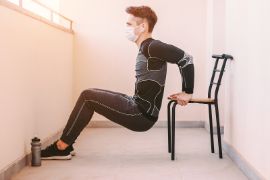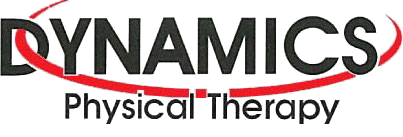Have you ever heard the phrase “exercise is the best medicine?”
Regular exercise helps people remain limber, boosts physical health, enhances mental performance and resilience, and improves longevity. It also reduces the risk of certain age-related issues.
When you are not able to access a fitness center, it’s great to know that you can still exercise as much as you wish at home. To learn more about the many health benefits of staying active, read this month’s feature article.
 Exercise is vital for overall health, mobility, and longevity for people of all ages. Although it influences all aspects of health, emphasis is usually placed on the physical benefits of regular exercise, including healthier cholesterol, blood pressure, and blood sugar levels, as well as fewer joint or bone issues. Indeed, strength exercises boost metabolism and this helps improve the body's ability to break down cholesterol and blood sugar.
Exercise is vital for overall health, mobility, and longevity for people of all ages. Although it influences all aspects of health, emphasis is usually placed on the physical benefits of regular exercise, including healthier cholesterol, blood pressure, and blood sugar levels, as well as fewer joint or bone issues. Indeed, strength exercises boost metabolism and this helps improve the body's ability to break down cholesterol and blood sugar.
Vigorous exercise also impacts blood pressure and inflammation by increasing blood circulation. Maintaining a regular workout routine provides additional benefits such as greater flexibility, balance, mobility, and range of motion.
The benefits of exercise also extend well beyond the physical, and coping in a global pandemic requires mindful approaches to health promotion and mental resilience. Exercise reduces circulating stress hormones, boosts mood-enhancing chemical compounds and can create a necessary refresh by breaking up the day.
The types of recommended exercises tend to change a little with age, but the importance of remaining physically active does not. According to research, strength, stretching, endurance, and balance exercises are quite beneficial for older individuals. Balance exercises are particularly vital because they reduce the risk of falling by building muscle mass in the legs. Each year millions of adults, mostly over the age of 65, are treated for serious injuries that occurred due to a fall. A number of these injuries, as well as the cost of treatment, pain killers, and in some cases surgeries, can be avoided by performing regular balance exercises. However, exercise does much more than just help people stay in shape or prevent injuries.
Clinical research shows that exercising for 20 minutes or more heightens mental performance. More specifically, activities such as walking, swimming, or cycling at a moderate pace followed by a cool-down period are linked to improved memory, concentration, and task completion. Individuals who are physically active also tend to demonstrate higher levels of self-esteem than those who are relatively inactive. This is because short bursts of activity (e.g., 10 to 40 minutes) boosts blood flow to the brain and this leads to better mental focus, as well as more positive thoughts. In addition, exercising for about 20 minutes before taking a test or giving a speech has been shown to improve performance. Working out before engaging in a challenging task stimulates parts of the brain that are responsible for concentration. This means that an individual can perform better by easily ignoring distractions.
Finding ways to stay physically active is also associated with a lower risk of experiencing emotional distress, anxiety, senility, or dementia. Age-related cognitive problems are a major issue for older individuals, but brain cell activity is enhanced in response to exercise and this boosts brain health. One study involving exercise and anxiety even showed that performing 30 minutes of physical activity before experiencing a stressful situation (being exposed to unpleasant images) supported healthier responses to stress. More importantly, the participants who exercised beforehand experienced decreased levels of anxiety. Overall, exercise provides an unlimited number of benefits, making it one of nature's best forms of medicine. We cannot always control what goes on around us, but we can choose to move in ways that nourish both our body and mind.
If you would like help in formulating an exercise regimen that is safe and effective, the physical therapists at Dynamics Physical Therapy can help. Call today to find out more.
References
1. Nied RJ, Franklin B. Promoting and prescribing exercise for the elderly. Am Fam Physician. 2002; 65(3):419-426.
2. Coudert J, Van Praagh E. Endurance exercise training in the elderly: effects on cardiovascular function. Curr Opin Clin Nutr Metab Care. 2000; 3(6):479-483.
3. Verbugh L, Konig M, Scherder EJ, Oosterlaan J. Physical exercise and executive functions in preadolescent children, adolescents and young adults: a meta-analysis. Br J Sports Med. 2014; 48:973-979.
4. Kang S, Hwang S, Klein AB, Kim SH. Multicomponent exercise for physical fitness of community-dwelling elderly women. J Phys Ther Sci. 2015; 27(3):911-915.
5. Centers for Disease Control and Prevention [CDC], National Center for Injury Prevention and Control. (2013). Web–based Injury Statistics Query and Reporting System (WISQARS). Atlanta, GA: CDC. Retrieved from: http://www.cdc.gov/injury/wisqars/
6. Li L, Men WW, Chang YK, Fan MX, Ji L, Wei GX. Acute Aerobic Exercise Increases Cortical Activity during Working Memory: A Functional MRI Study in Female College Students. PLoS One. 2014; 9(6):e99222.
7. Matta Mello Portugal E, Cevada T, Sobral Monteiro-Junior R, Teixeira Guimarães T, da Cruz Rubini E, Lattari E, Blois C, Camaz Deslandes A. Neuroscience of exercise: from neurobiology mechanisms to mental health. Neuropsychbiology. 2013; 68(1):1-14.
8. Verbugh L, Konig M, Scherder EJ, Oosterlaan J. Physical exercise and executive functions in preadolescent children, adolescents and young adults: a meta-analysis. Br J Sports Med. 2014; 48:973-979
9. Hillman, C.H., Pontifex, M.B., Raine, L.B., Castelli, D.M., Hall, E.E., Kramer, A.F. (2009). The effect of acute treadmill walking on cognitive control and academic achievement in preadolescent children. Neuroscience. 159(3):1044-1054.
10. Barnes DE, Santos-Modesitt W, Poelke G, Kramer AF, Castro C, Middleton LE, Yafee K. The Mental Activity and eXercise (MAX) trial: a randomized controlled trial to enhance cognitive function in older adults. JAMA Intern Med. 2013; 173(9):797-804.
11. Smith JC. Effects of Emotional Exposure on State Anxiety after Acute Exercise. Med Sci Sports Exerc. 2013;45(2):372-8.


